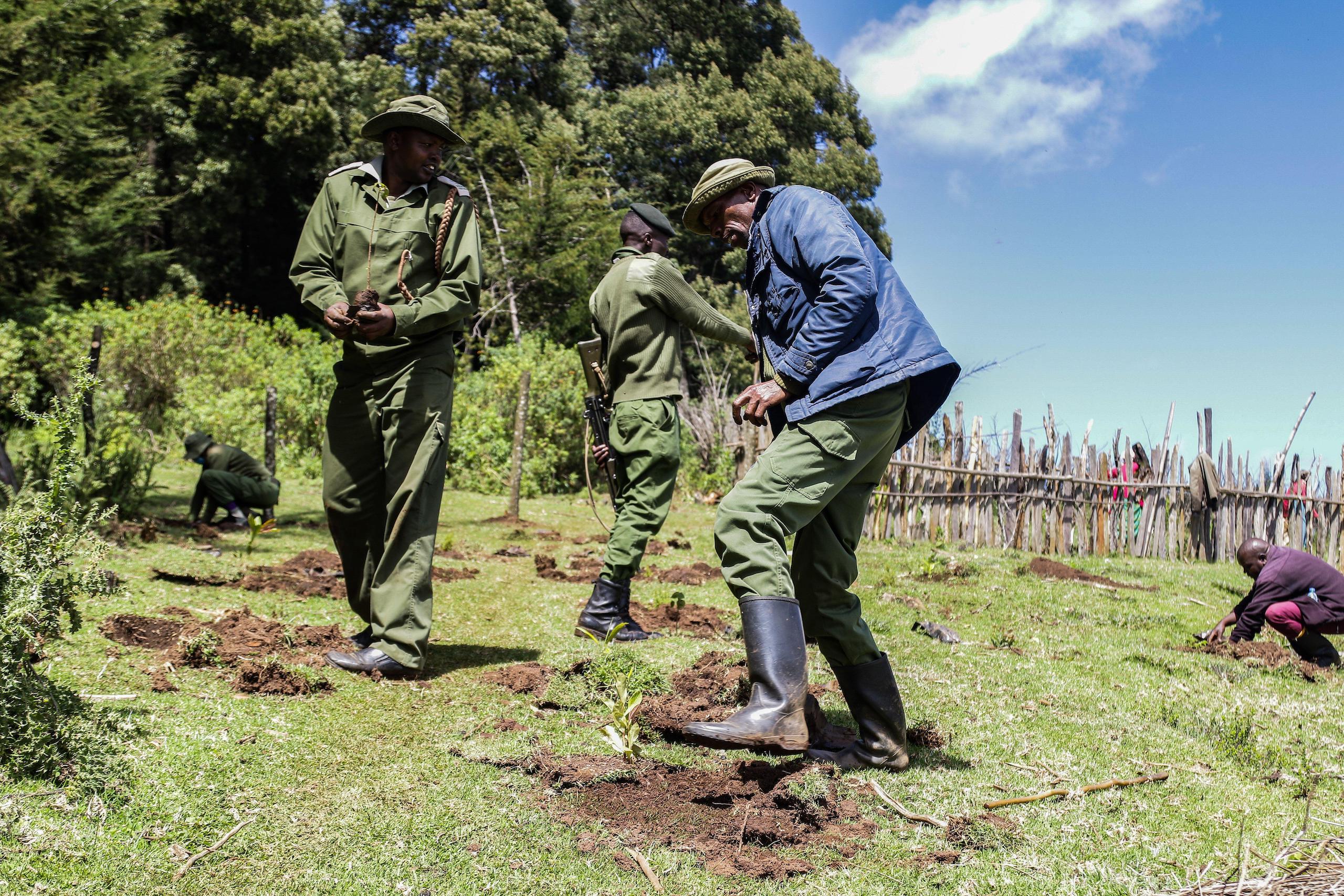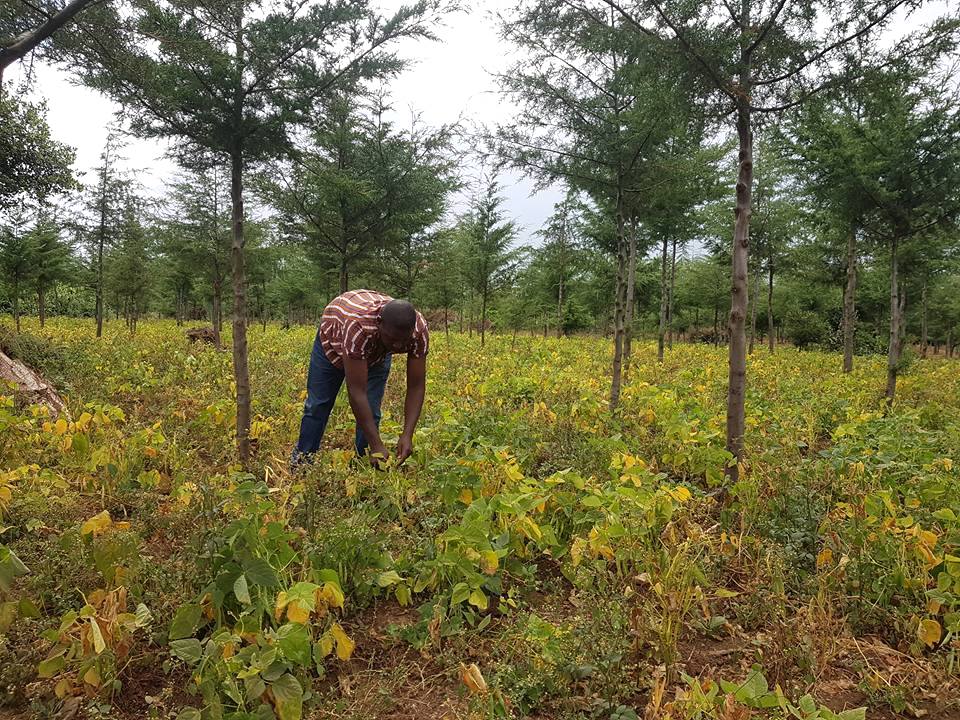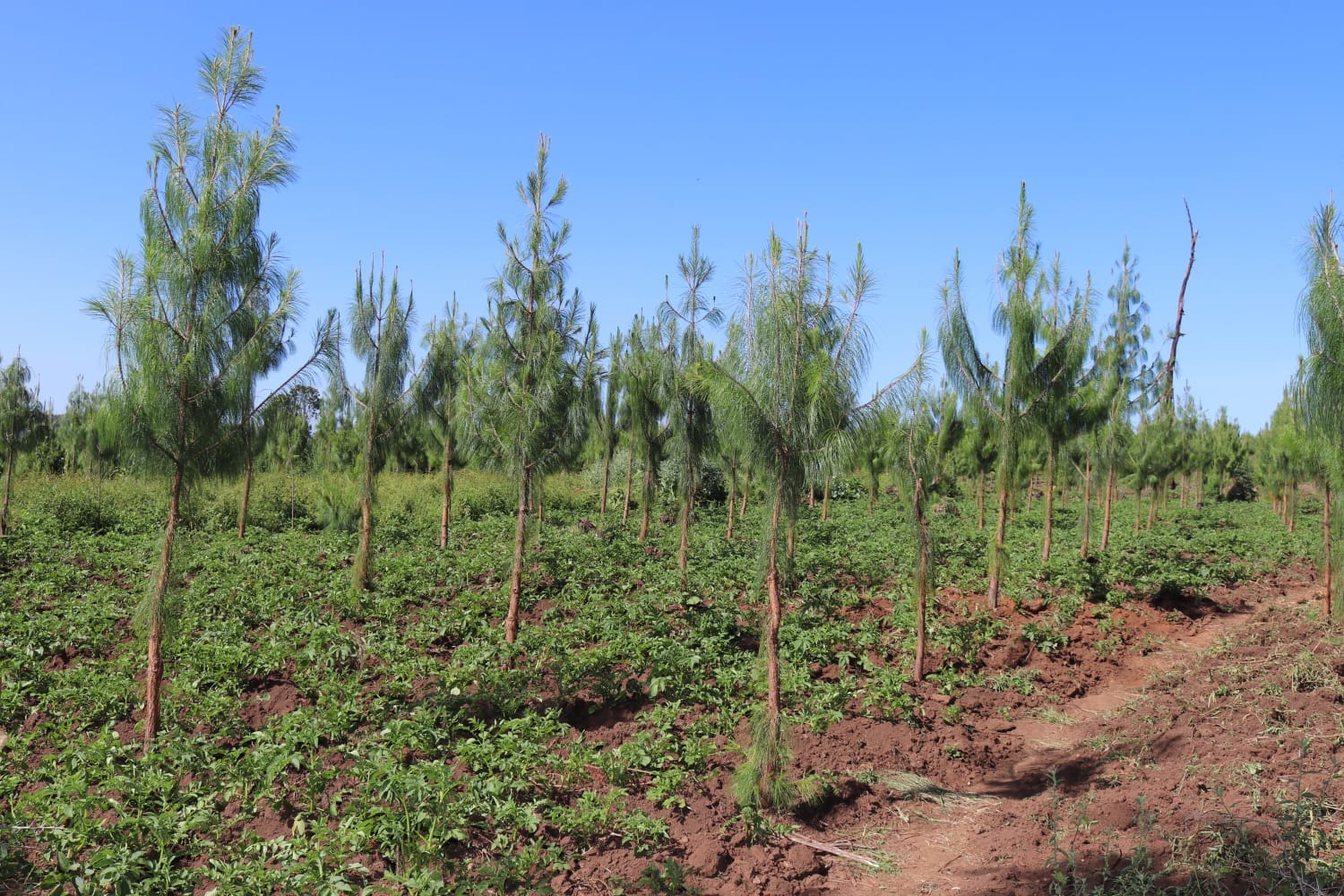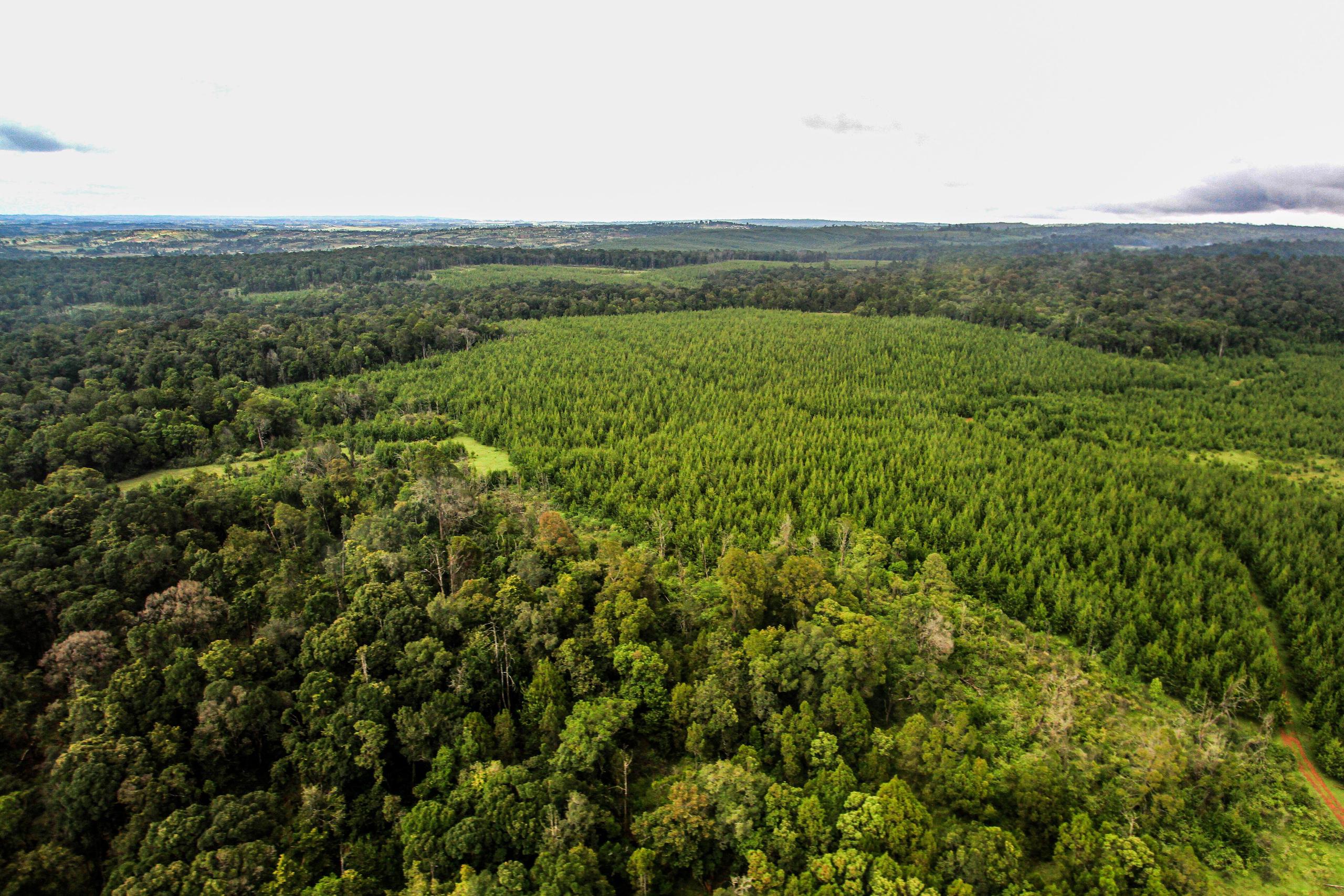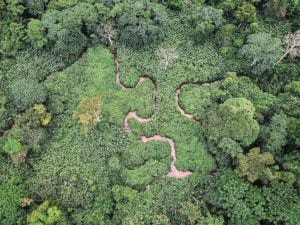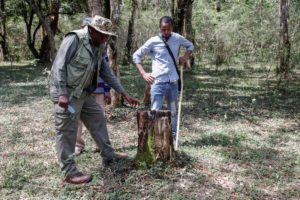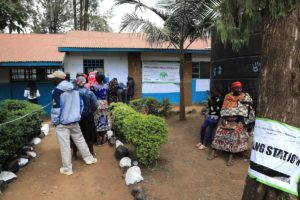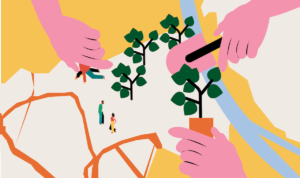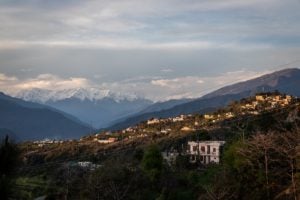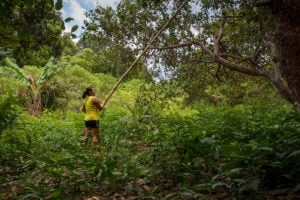In September last year, Kenya’s new deputy president announced that the government was planning to allow people to cultivate crops in forests in order to bolster food security.
“The shamba system will return,” Rigathi Gachagua told a gathering in Baringo county. “We have issued an order for citizens to be allowed to cultivate crops in forests so that we increase food production.”
The statement triggered a wave of discussion over the merits and problems of Kenya’s century-old and controversial “shamba” system of agroforestry. Days later, Gachagua walked back on his statement, claiming he had been misquoted. He said that farmers could only plant on forest reserve land that has no tree cover and that the government will also work with them on afforestation programmes in reserves.
The government has been engaging farmers in tree-planting on such land for some time, benefitting 49,070 individual farmers or households as of the end of September 2022, the Kenya Forest Service, a government agency, told China Dialogue.
The issue of farming within forests is a sensitive topic in Kenya, a country that between 2000 and 2020 experienced a 6% net loss in tree cover, according to Global Forest Watch.
A contested policy
Shamba, a Swahili word that loosely translates to “plantation” or “farm”, refers to a government arrangement to allow local communities to produce food on forest land for free. In return, the people plant and look after trees until they are mature enough to be harvested for timber. The system does not apply to indigenous forests, only to planted ones.
Shamba seeks to strike a balance between the growing of crops, like bananas, beans, yams, and corn, and wood resources, as well as beekeeping, and the gathering of medicinal herbs, mushrooms, forest fruits, and fodder for livestock.
The system was started in 1910 by the British colonial administration to supply wood for industrial and domestic use in Kenya and to ease pressure on natural forests. By 1979, 160,000 hectares of plantation forest had been established, according to the Kenya Forest Research Institute (KEFRI). But years of misuse and people destroying the planted forests led to the system being banned and reintroduced on multiple occasions.
The first ban, in 1986, was lifted in 1994 before being brought in again in 2003, with the then-president Mwai Kibaki citing abuse by Kenya Forest Service officials and timber millers.
By then, studies had shown that fewer seedlings were surviving – rates had declined from as high as 90% to as low as 10% in some areas.
The government tried to reintroduce the shamba system in 2007 under a new name – the Plantation Establishment and Livelihood Improvement Scheme (PELIS). In January 2021, then president Uhuru Kenyatta outlawed PELIS, citing environmental degradation due to unsustainable tree felling, three years after imposing a moratorium on logging in public and in community forests over the same concerns.
Pressure on farmland
Paul Rotich, a farmer in Nakuru county, about 200 kilometres west of the capital, Nairobi, shows China Dialogue a mature tree that he helped plant and nurture while farming on a previously treeless piece of land allocated to him by the Kenya Forest Service. Now, he explains, the mature trees constitute a forest, his crops are shaded out and he has had to leave.
Rotich has since been allocated a new piece of land and is now growing crops for his family and for sale.
“Last season I planted maize and upon selling it, I bought a cow that is now producing milk for my family’s use,” he says.
Julius Njoroge, a Kenyan expert on agroforestry, says the world is facing unprecedented challenges and food insecurity that have been top of many governments’ agenda, thus, the shamba system could offer solutions.
Grain shortages caused by the war in Ukraine have highlighted the importance of food security for African countries against the backdrop of growing geopolitical tensions. Meanwhile, the impacts of climate change, which are already hitting many African countries, including Kenya, are altering patterns of farming and making food security increasingly complex.
Njoroge says that stakeholders cannot agree on the best way to enhance food security. In Kenya, crop yields have been raised mainly by expanding land under cultivation, he says, rather than increasing the productivity of currently farmed land. Immense pressure to produce more food has meant that most of the land has been converted into agricultural land to feed a growing population, he adds. This has been happening at a time when some unsustainable policies saw a lot of planted forest land being accessed, with heavy logging a result.
Njoroge warns that the shamba system not only requires the community and government to work together to produce food and nurture trees but several other sectors to be involved too.
He says companies interested in offsetting their emissions can get involved in such projects, noting that Kenya’s largest mobile phone company, Safaricom, are engaging with communities to combine planting trees and crops with carbon-offsetting schemes.
Conservationists up in arms
In response to the uproar at his comments about restarting the shamba system, Gachagua went on national television on 28 September 2022 to say the media had misquoted his speech of a few days earlier. “We have a serious programme on afforestation,” he said. Within forest reserves, farmers should only grow food on land without tree cover, while also assisting in the planting of saplings, he explained. When the trees are mature, “the forest can continue growing.”
However, Dr Joram Kagombe, the national chairman of the Forestry Society of Kenya, an industry body, spoke in support of the system, saying it will support plantation establishment and concurrently support livelihoods for communities that reside in areas immediately next to major forests and landscapes.
It’s a system that theoretically is good, but practically it doesn’t holdCharles Mwangi, Pan African Climate Justice Alliance
In Baringo county, William Kiplong’on, a member of the Narasha Community Forest Association, says his community was first allowed to farm inside forests in 1966. Subsequent regimes have pushed them out of the forest land and back into it over the years.
“The trees that the government is harvesting right now are the ones that the Kenyatta and Moi governments allowed farmers to go into forest land and plant,” Kiplong’on says, referring to the administrations of Jomo Kenyatta, 1964–1978, and Daniel Arap Moi, 1978–2002.
He says that farmers are allowed to plant and produce food crops for one season while they clear and prepare the land for the tree seedlings they are then provided with for planting and nurturing.
While a national ban on shamba agroforestry practices is currently in place, the practice still takes place in informal ways and among farmers contracted by private forestry companies, indicative of the limited enforcement of Kenyatta’s 2021 ban.
Putting communities at the centre of forest management
“In 2005, a law was passed allowing community members to go into forest land a maximum of five kilometres around the forests. In it, they were allowed to cultivate, keep bees, fetch firewood, or get herbs,” he explains.
He was referring to the Kenya Forests Act, of 2005, which gave the rights to community associations.
The act allows a “member of a forest community, together with other members or persons resident in the same area, to register a community forest association”. After registration, associations will apply to the director of the Kenya Forest Service for permission to participate in the conservation and management of a state forest or local authority forest.
Claire Nasike, Africa coordinator at the Global Landscapes Forum, a platform on sustainable land use, says that shamba is a good system to generate forests and provide food for local communities.
“It creates a sense of ownership for locals who tend to young trees and grow food until the trees mature,” she says. She thinks the challenge with shamba is that it has been abused due to bad political leadership. “If properly implemented, it is a system that can generate social, environmental and economic benefits.”
Nasike adds that the system could also be beneficial to the indigenous communities whose rights have been violated by governments when evicted from the forests.
“Indigenous communities like the Ogiek in Mau Forest and Sengwer in Embobut Forest have lived in and protected the forests for a long while before their eviction from these forests. In the shamba system, locals and forest-adjacent communities are primary beneficiaries,” Nasike adds.
Others disagree. Charles Mwangi, head of programmes and research at the Pan African Climate Justice Alliance, a Kenya-based network of organisations, says shamba is not sustainable and has been used as an excuse to destroy forests. He points to corruption leading to the abuse of the system for personal gain, which has contributed to forest cover loss.
“It’s a system that theoretically is good, but practically it doesn’t hold,” he says.
As the country marked International Day of Forests in March, the government sought to assure citizens that they will not be denied access to forest land for producing food. While food security concerns are unlikely to drop off the political agenda in Kenya, the formal return of the shamba system appears, at least for now, to have been defeated in the court of public opinion.
